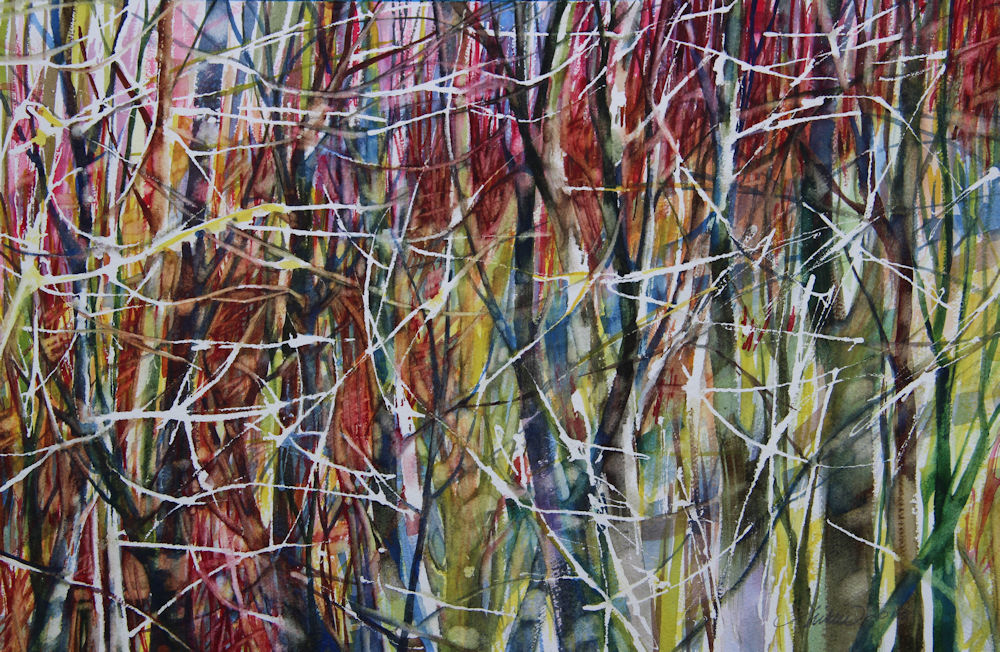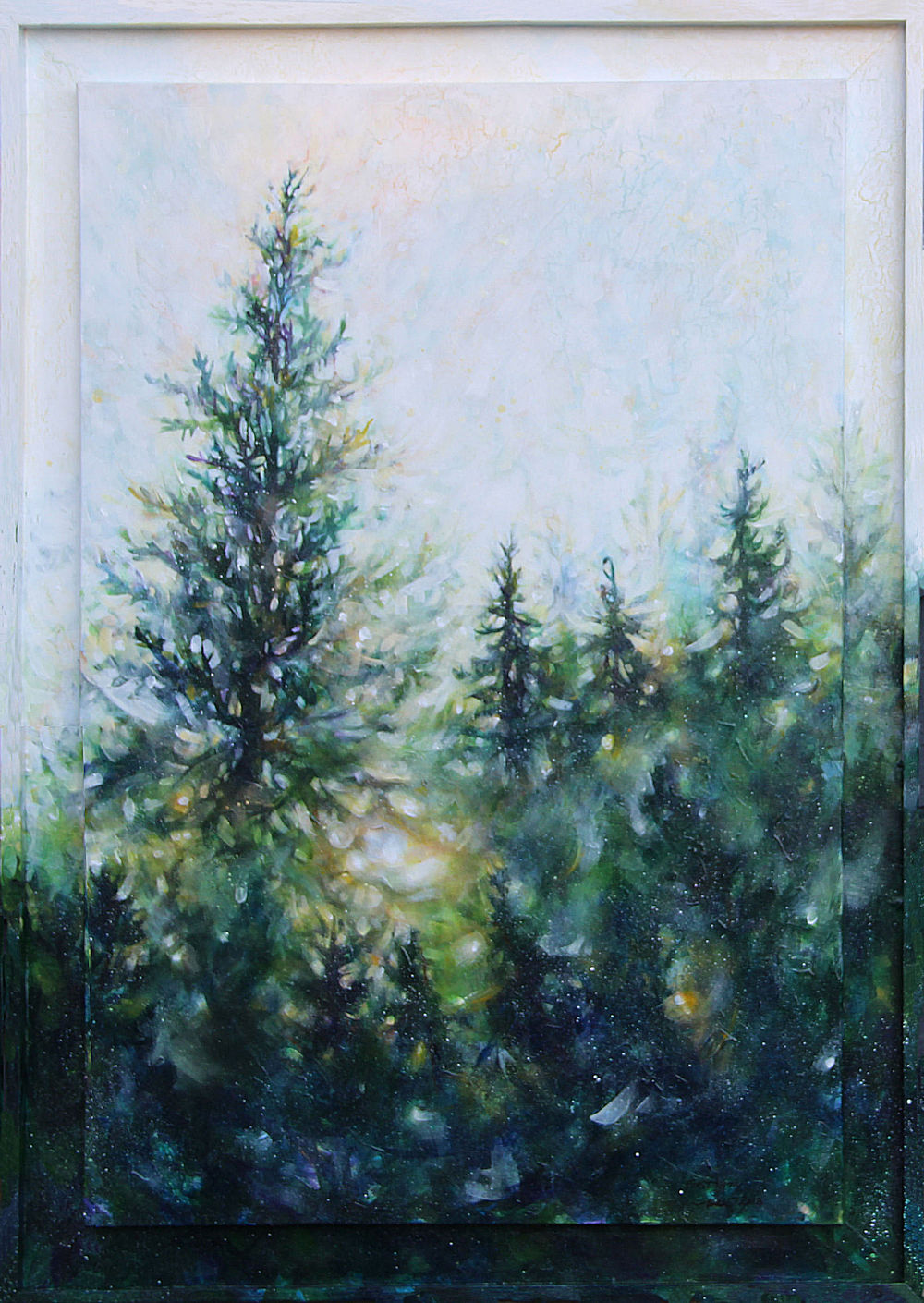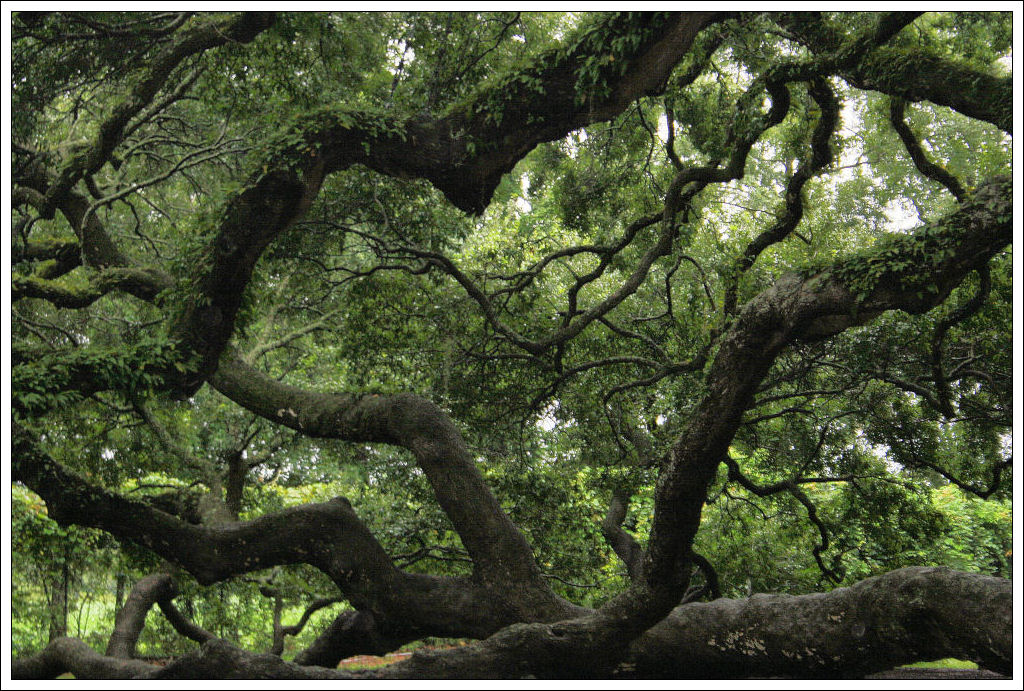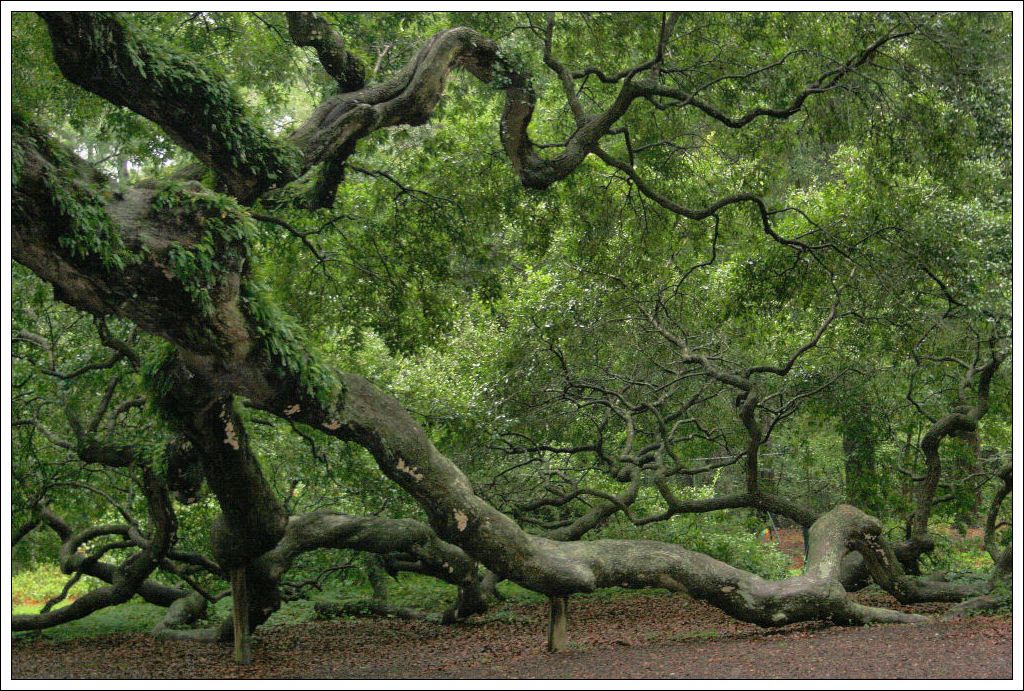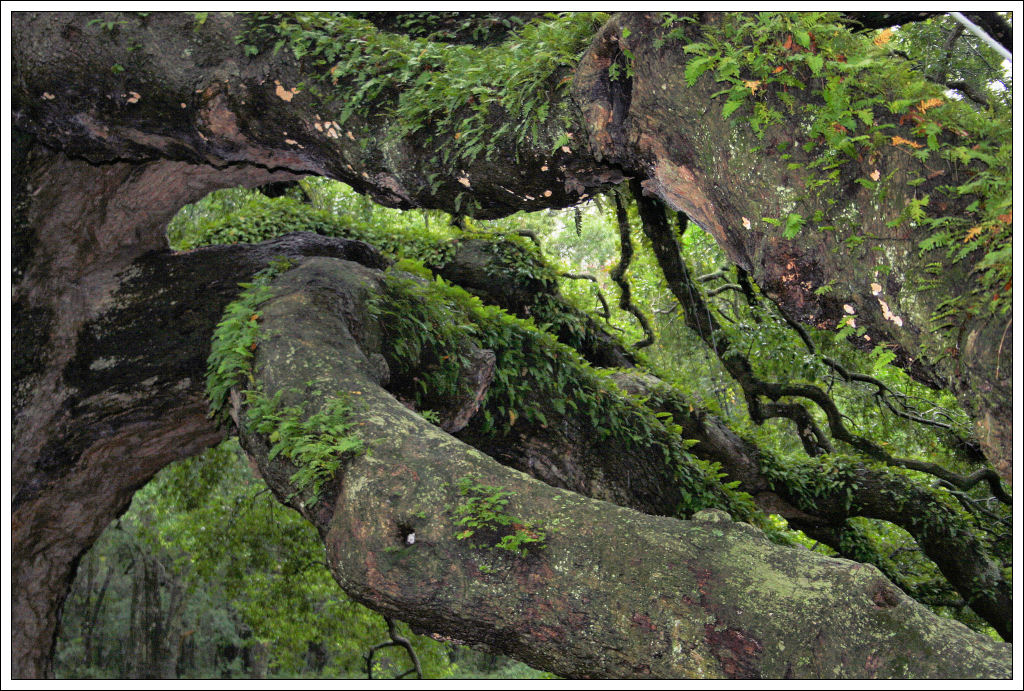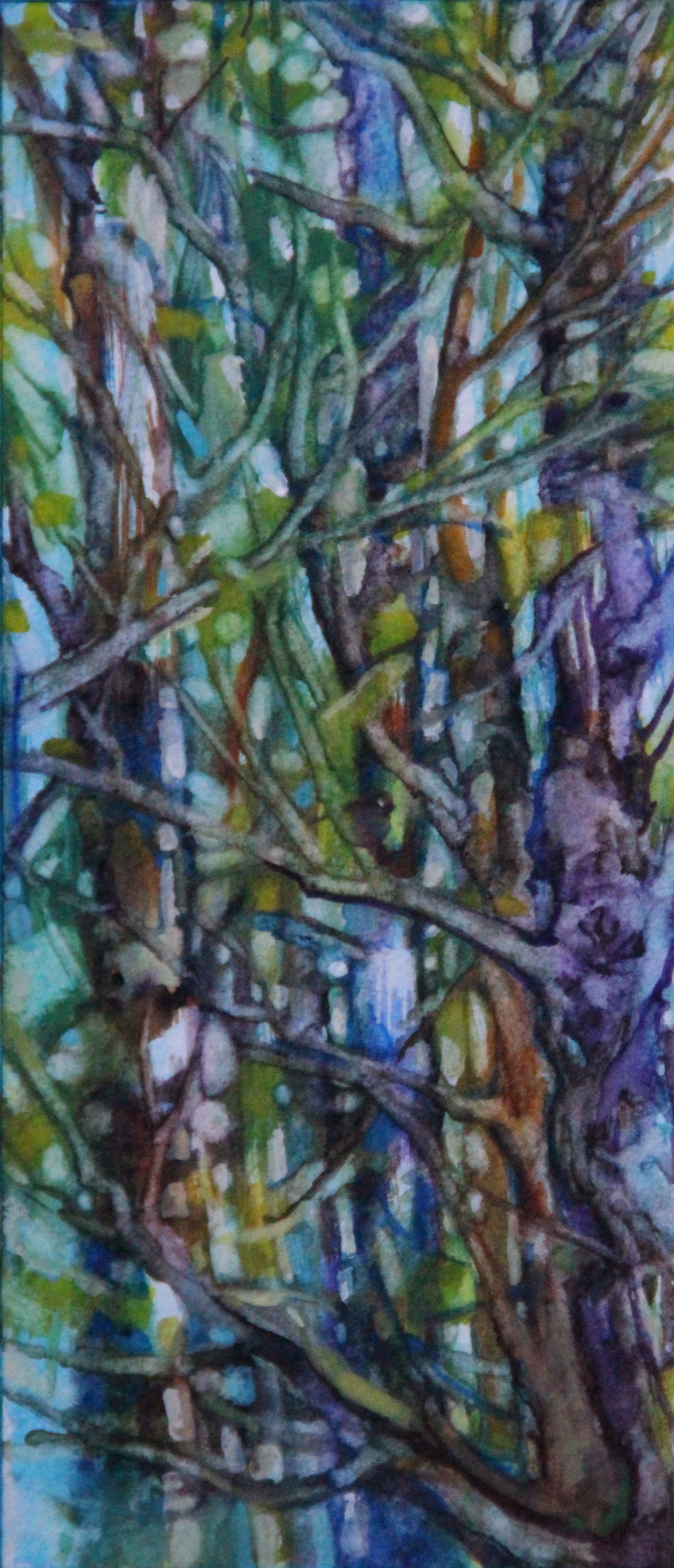Forests
« Previous Entries Next Entries »Loosestrife
Friday, June 28th, 2019
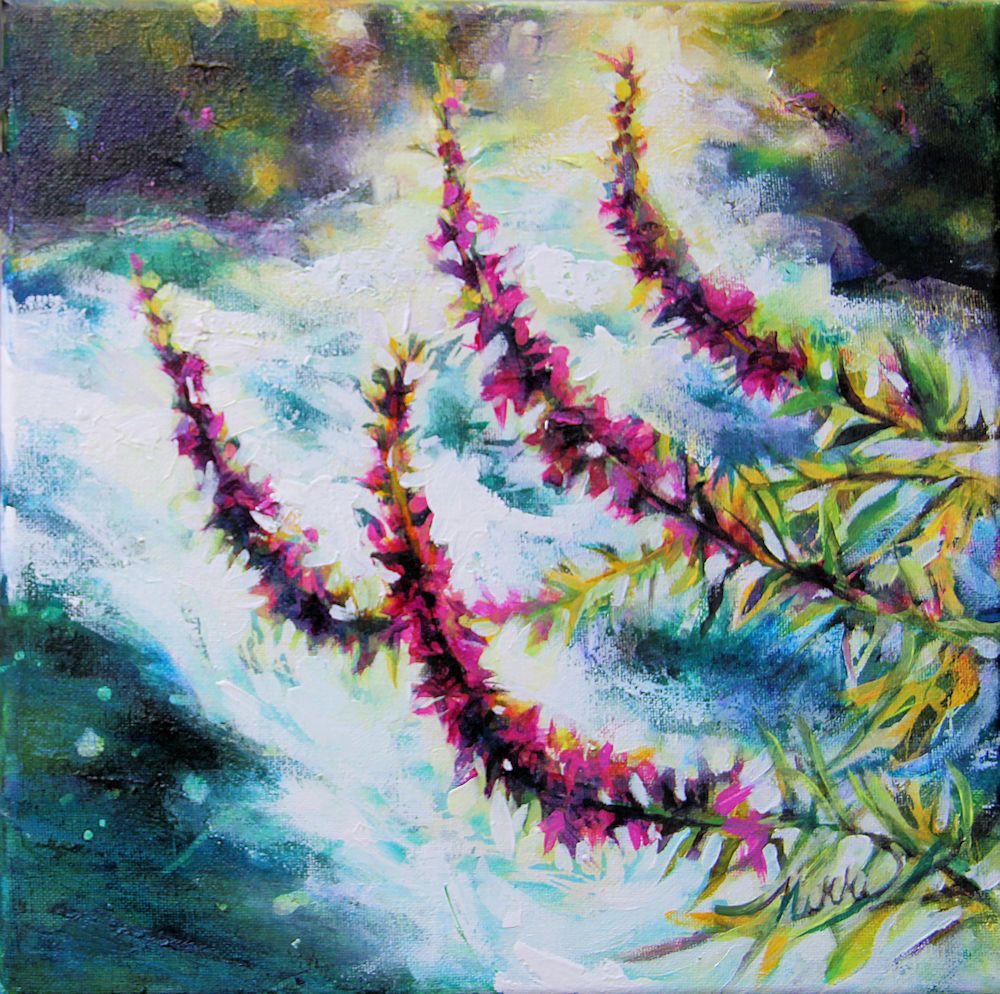
Loosestrife: beautiful invasion, Violet, ON Canada – 12 x 12 inches acrylics, crackle medium on canvas, frame unnecessary.
Store-bought canvases are really slippery, so I’ve started using crackle medium to give the paint something to hold onto. It also is great for subtle textures and building layers of color. For more texture, the medium can be manipulated while wet. It softens the paint layer/s below and can be scratched, lifted or molded into shapes with a brush.
Goldenrod
Tuesday, June 25th, 2019
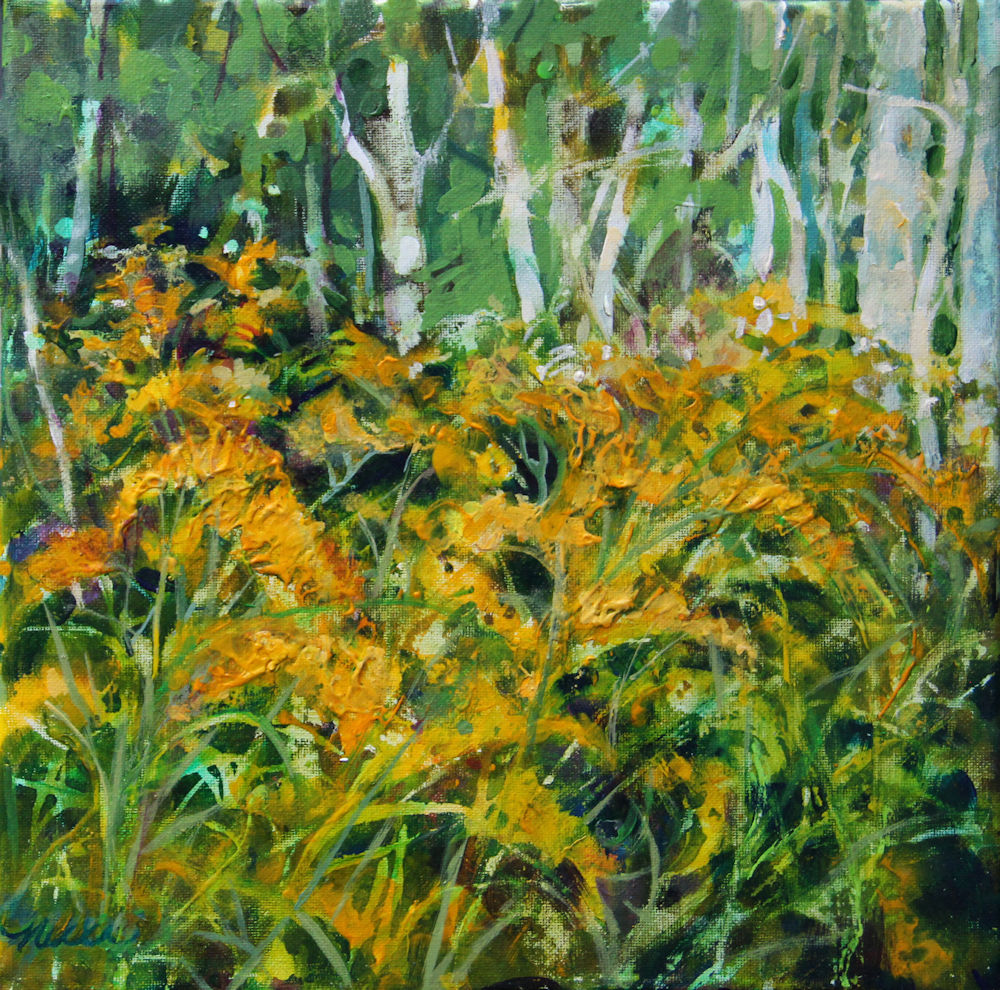
Goldenrod, 12 x 12 inches acrylics on canvas, frame unnecessary.
Forest Spirit
Monday, June 24th, 2019
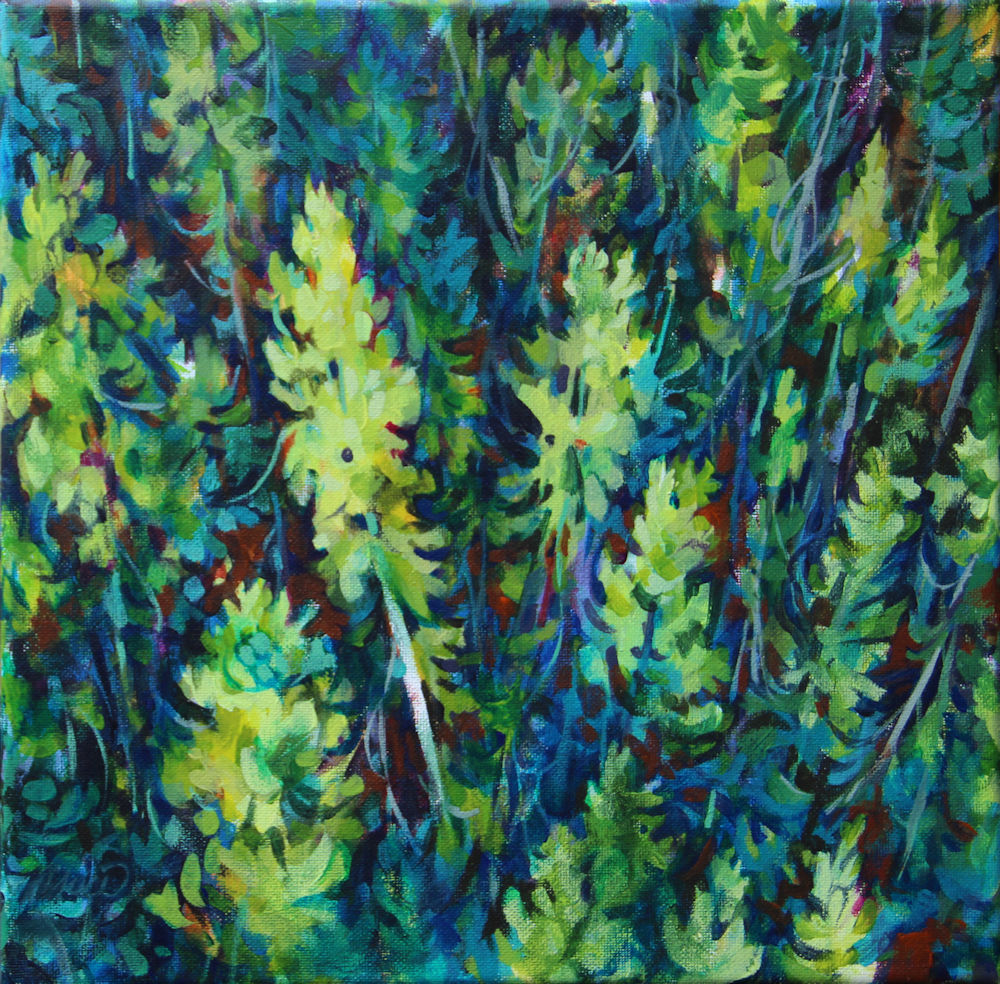
Forest Spirit, 12 x 12 inches acrylics on canvas, frame unnecessary
Gale Creek
Wednesday, June 12th, 2019
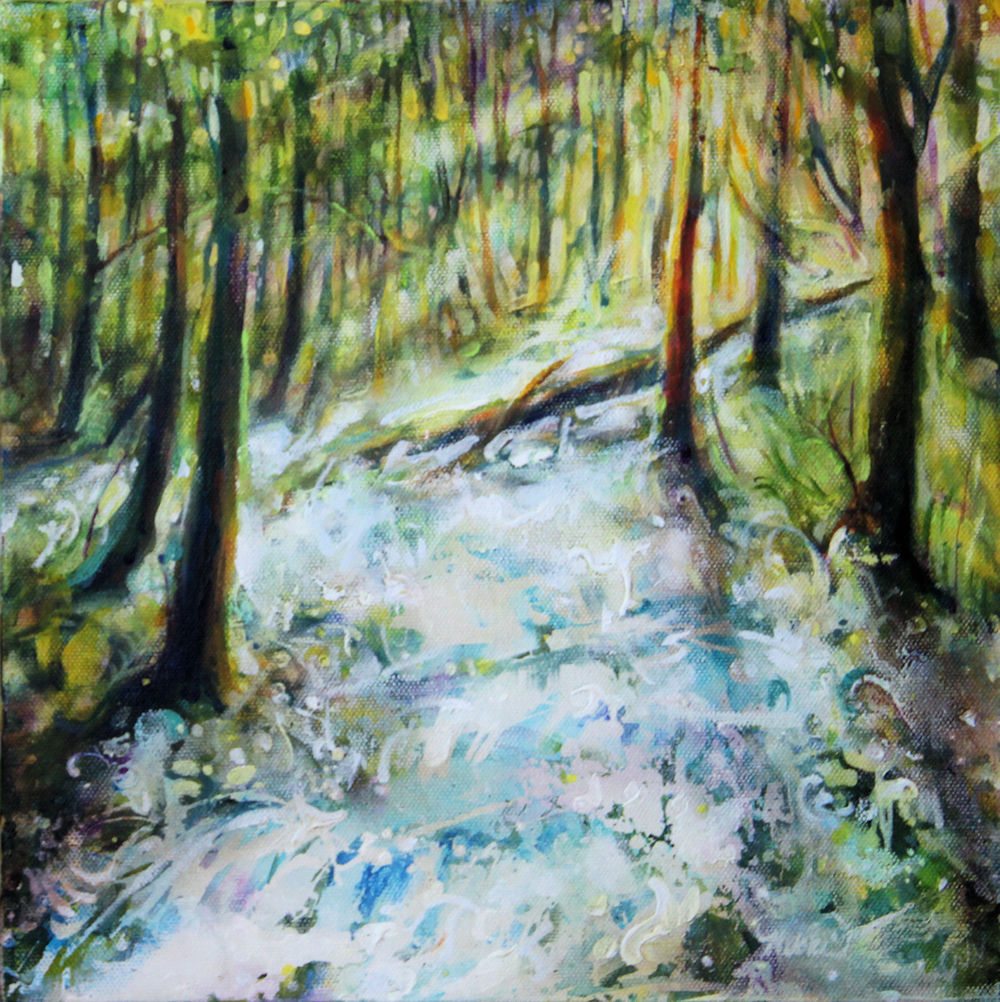
Gale Creek, 12 x 12 inches acrylics on canvas, frame unnecessary. 2nd entry for the Square Foot Show, Bismark, ND August 6th-30th, 2019
Artavita Contest finalist
Saturday, June 1st, 2019
 This piece was a finalist in the Artavita competition for the front and back covers of the International Contemporary Masters Volume 13, June 2019.
This piece was a finalist in the Artavita competition for the front and back covers of the International Contemporary Masters Volume 13, June 2019.
Winter Forest: Dogwood, 14H x 20W inches watercolors on 140 lb cold pressed, 21H x 26″ framed size. In the beautiful, organized chaos of a winter forest in Pacific Northwest, rain brings out the subtleties, in particular the red branches of wild Dogwood complimented by the surreal green colors of moss on every tree.
First Snow 03 – finished commission
Friday, November 9th, 2018
First Snow 03 – 01 replicated – finished commission
Indian Paintbrush
Tuesday, May 8th, 2018
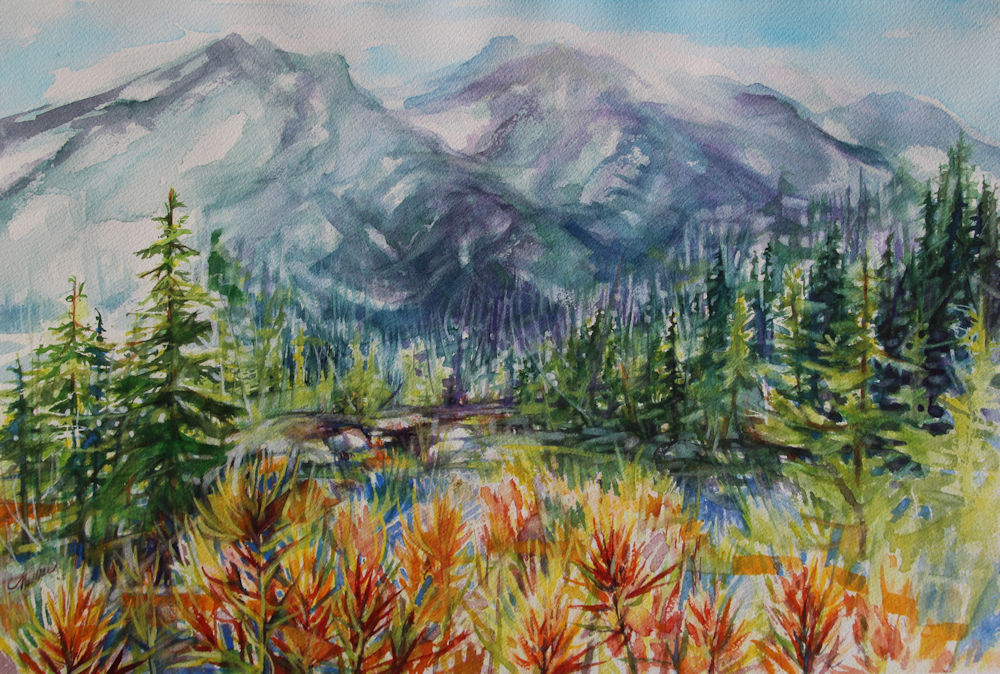
Indian Paintbrush, Mt. St. Helen’s Washington, 14H x 20W inches watercolors on 140 lb cold pressed. Framed size approx. 20H x 26W inches – white mat and white wood frame with crackle finish.
The Angel Oak, South Carolina
Saturday, April 14th, 2018
This article and set of photos, initially written in 2008 and updated in 2018, honors the tireless efforts to halt construction on John’s Island, South Carolina that would have encroached on an area of land boasting the Oak tree estimated to be 400 to 500 years old. Thanks to conservation and other local groups like schools and churches, individual donors, pro-bono work from lawyers, a sizable grant, and numerous petitions, we are reassured that persistence does make a difference on this planet. The land surrounding the Angel Oak is no longer in jeopardy. Read more about this amazing tree.
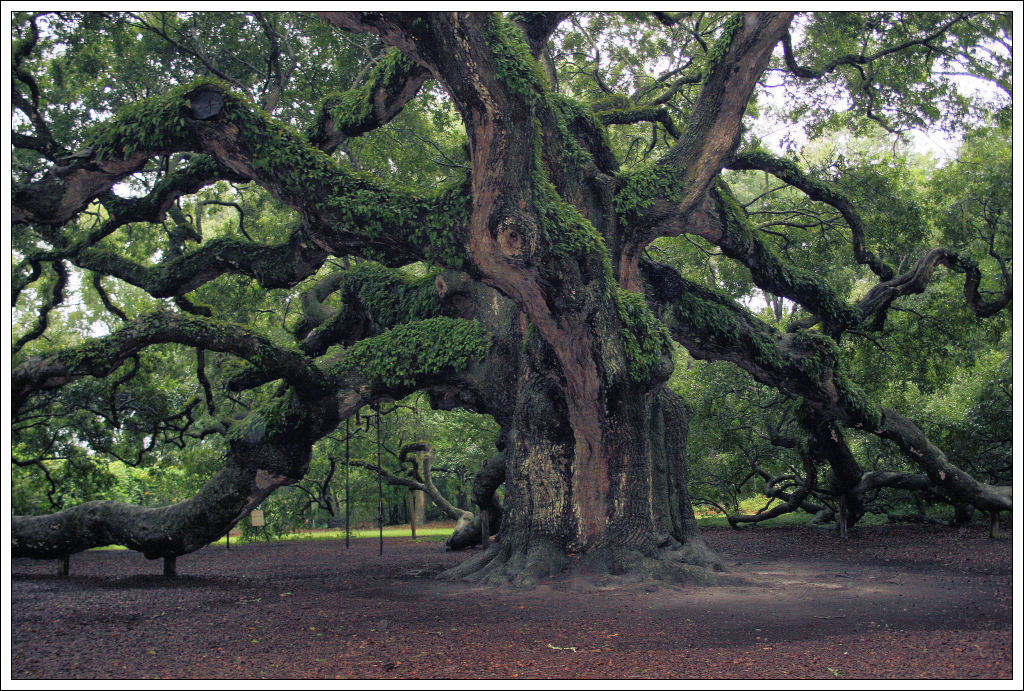 Charleston, SC is proud of its heritage and respected for its commitment to preserving history in the area, and after many years, residents were finally victorious over plans that would have cut down nearby trees and forest in favor of land development.
Charleston, SC is proud of its heritage and respected for its commitment to preserving history in the area, and after many years, residents were finally victorious over plans that would have cut down nearby trees and forest in favor of land development.
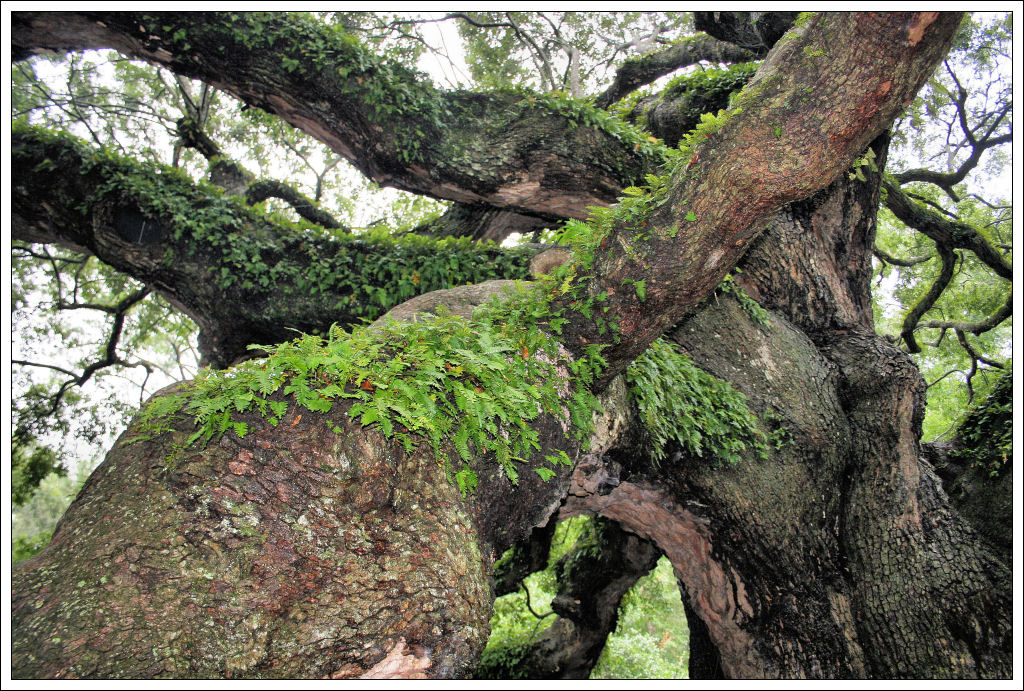 In one 2008 online petition there were hundreds of pages of interesting comments and pleas from residents who have fond memories of climbing the branches as children, plus exclamations written by tourists – national and international – who have visited the area specifically to see the Angel Oak. The tree is so significant to locals, a nearby elementary school carries its name. Picnics, weddings and reunions are held in the Angel Oak Park, including an annual summer Arts event, “Evening under Angel Oak” featuring live music, drama and other activities.
In one 2008 online petition there were hundreds of pages of interesting comments and pleas from residents who have fond memories of climbing the branches as children, plus exclamations written by tourists – national and international – who have visited the area specifically to see the Angel Oak. The tree is so significant to locals, a nearby elementary school carries its name. Picnics, weddings and reunions are held in the Angel Oak Park, including an annual summer Arts event, “Evening under Angel Oak” featuring live music, drama and other activities.
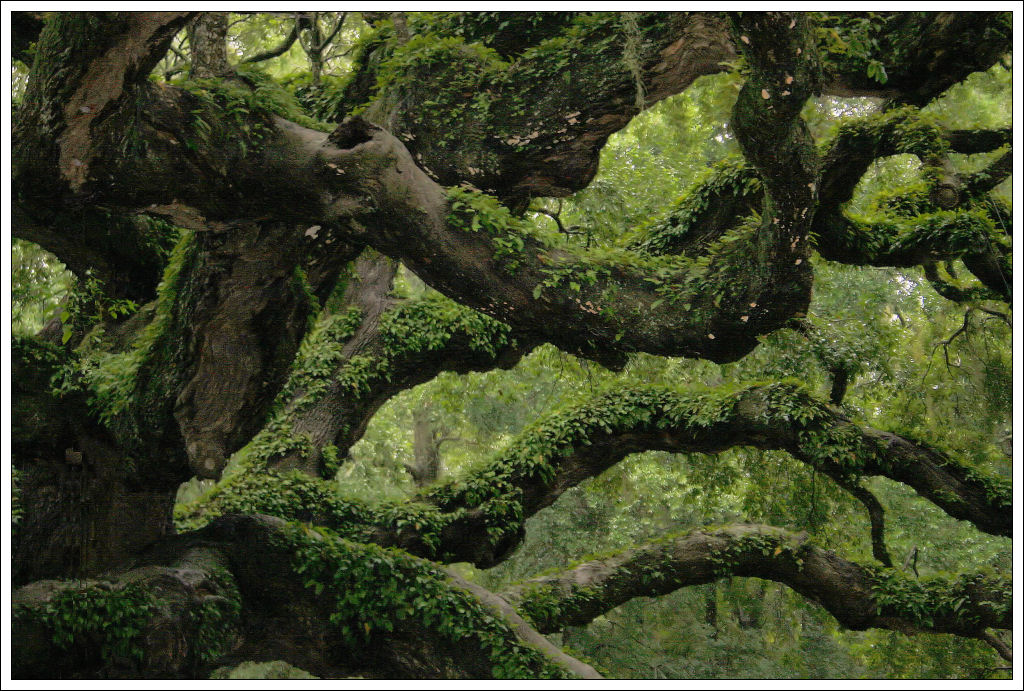 During August, 2008 my husband and I drove through South Carolina and took a short detour to John’s Island. We drove through wicked rains at the edge of Tropical storm Faye, so when we arrived at Angel Oak Park no one else was there. Although the light was not ideal, fortunately rain subsided long enough to take photos.
During August, 2008 my husband and I drove through South Carolina and took a short detour to John’s Island. We drove through wicked rains at the edge of Tropical storm Faye, so when we arrived at Angel Oak Park no one else was there. Although the light was not ideal, fortunately rain subsided long enough to take photos.
This is one impressive tree! The trunk and lower branches are so immense, they have been propped up with stakes and heavy cables here and there, which is a little intrusive when taking photos, but obviously necessary. Growth is spread outward more than upward. No wonder it is considered sacred by the locals… there is an appreciable presence felt while standing silently under its canopy, which apparently occupies 2,000 yards of space above.
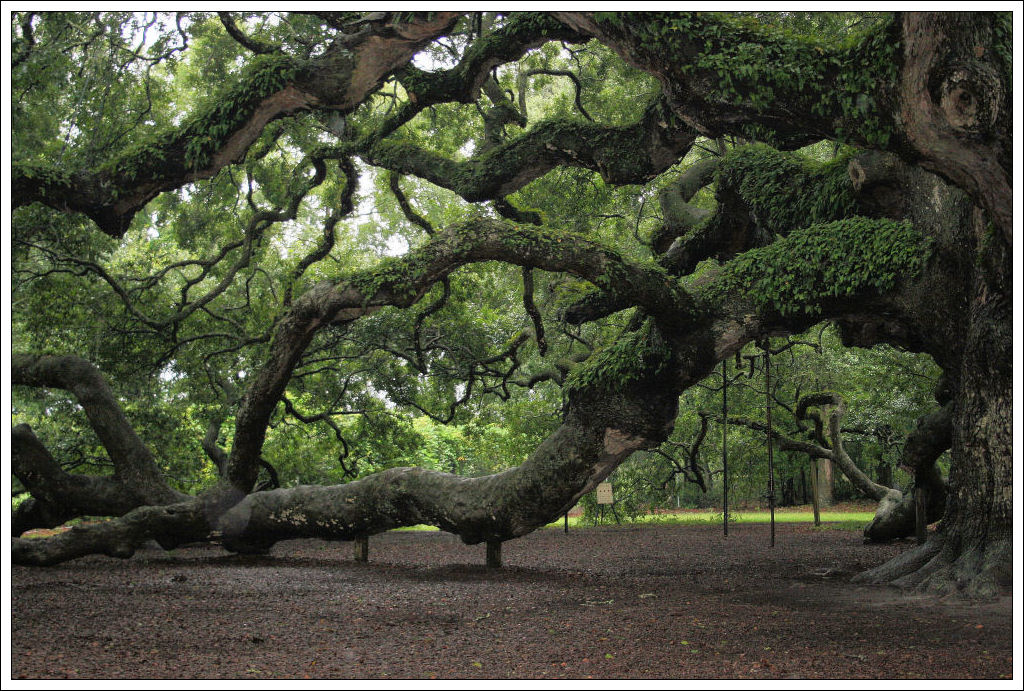 It occurred to me that this tree has lived through one serious chunk of history, and I wondered what was happening on our planet when it was knee-high to an acorn? The Angel Oak’s parent-tree and surrounding forest flourishes for eons before one special acorn falls from one of the magnificent Oaks on the southeastern shores of a land only known to the indigenous peoples then. The acorn sprouts along with many others, but this one will outlive the rest, seasoning hurricanes, climate changes, human encroachment and wars.
It occurred to me that this tree has lived through one serious chunk of history, and I wondered what was happening on our planet when it was knee-high to an acorn? The Angel Oak’s parent-tree and surrounding forest flourishes for eons before one special acorn falls from one of the magnificent Oaks on the southeastern shores of a land only known to the indigenous peoples then. The acorn sprouts along with many others, but this one will outlive the rest, seasoning hurricanes, climate changes, human encroachment and wars.
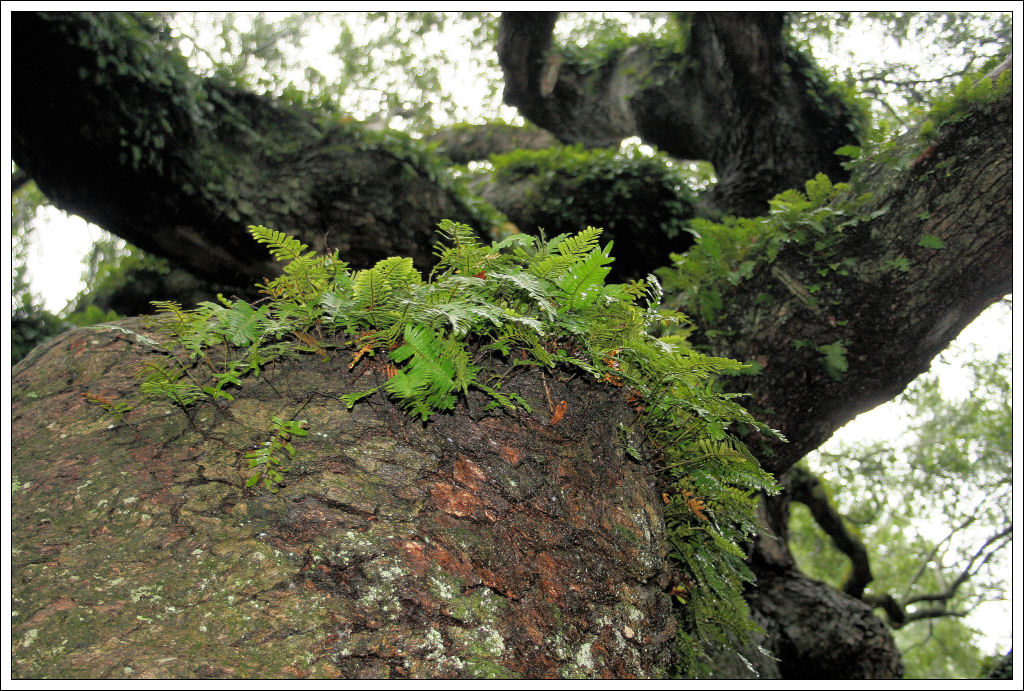 Much of what we are familiar with; our collective modern identity has been shaped by the events and people who lived and died since the Angel Oak established its first roots in the earth. If trees could talk…!
Much of what we are familiar with; our collective modern identity has been shaped by the events and people who lived and died since the Angel Oak established its first roots in the earth. If trees could talk…!
The Angel Oak does not exist on its own. It depends on the surrounding forest, so any deliberate disturbance in the immediate soil or neighboring properties would disrupt its far-reaching and delicate root system. Thankfully, now the tree will remain host to a myriad of life forms, supporting an abundant, specialized ecosystem of mosses, fungi and fern varieties, insects and amphibians – hopefully for five hundred more years. The Angel oak lives on as one of the true jewels on this planet.
While older, poorer quality photos are still gradually being replaced, the Majesty of Trees / Dancing with Trees exhibition website is now updated. Check it out!
Mossy Melody
Saturday, February 17th, 2018
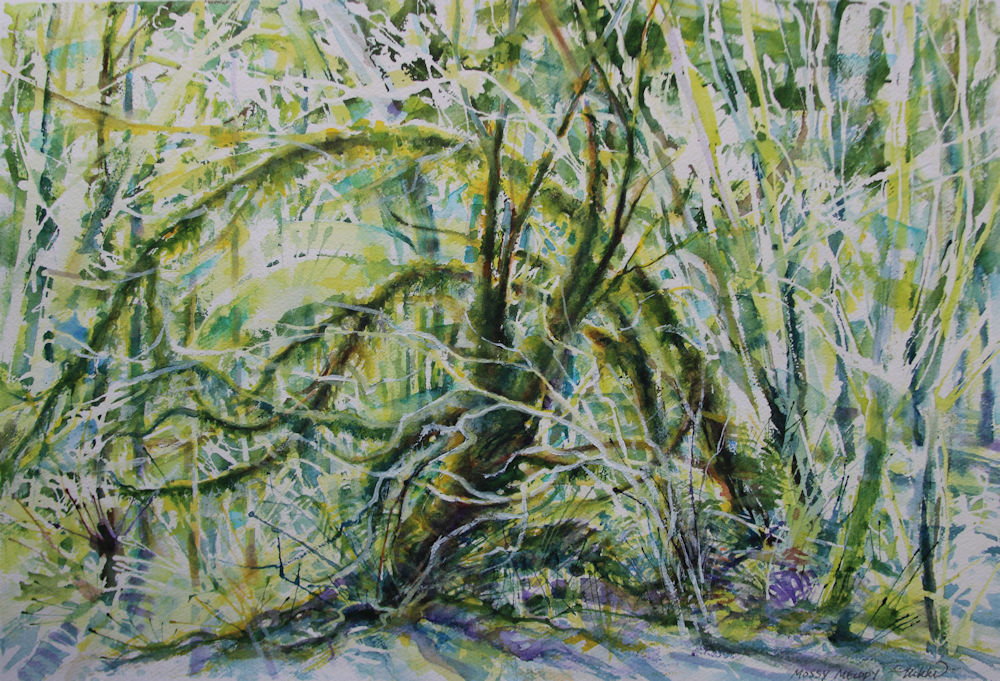
Mossy Melody, Tualatin Hills Nature Park, Beaverton Oregon, 14H x 20W inches watercolors on 140 lb cold pressed… documenting the generous chunks of glowing moss that characterize winter and early Spring here in Oregon. Even on overcast days the mossy edges of trunks and branches vibrate in a dark forest.
Framed size approx. 20H x 26W inches – white mat and white wood frame with crackle finish.
Showcased in J. Mane Gallery’s Seasons 2020 exhibition.
Branches, bookmark
Monday, February 5th, 2018
Branches, 6 x 3 inches watercolors bookmark
« Previous Entries Next Entries »

